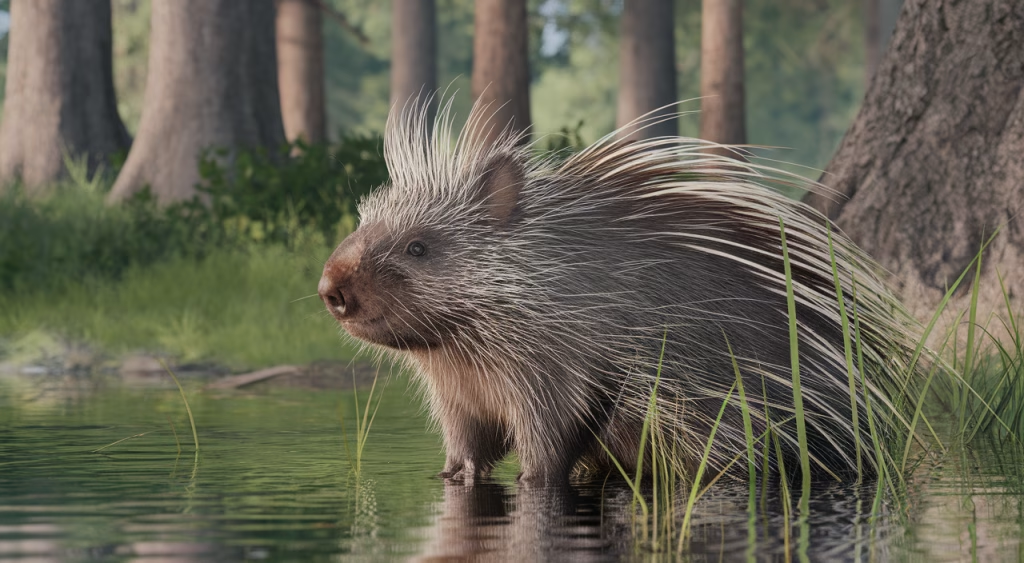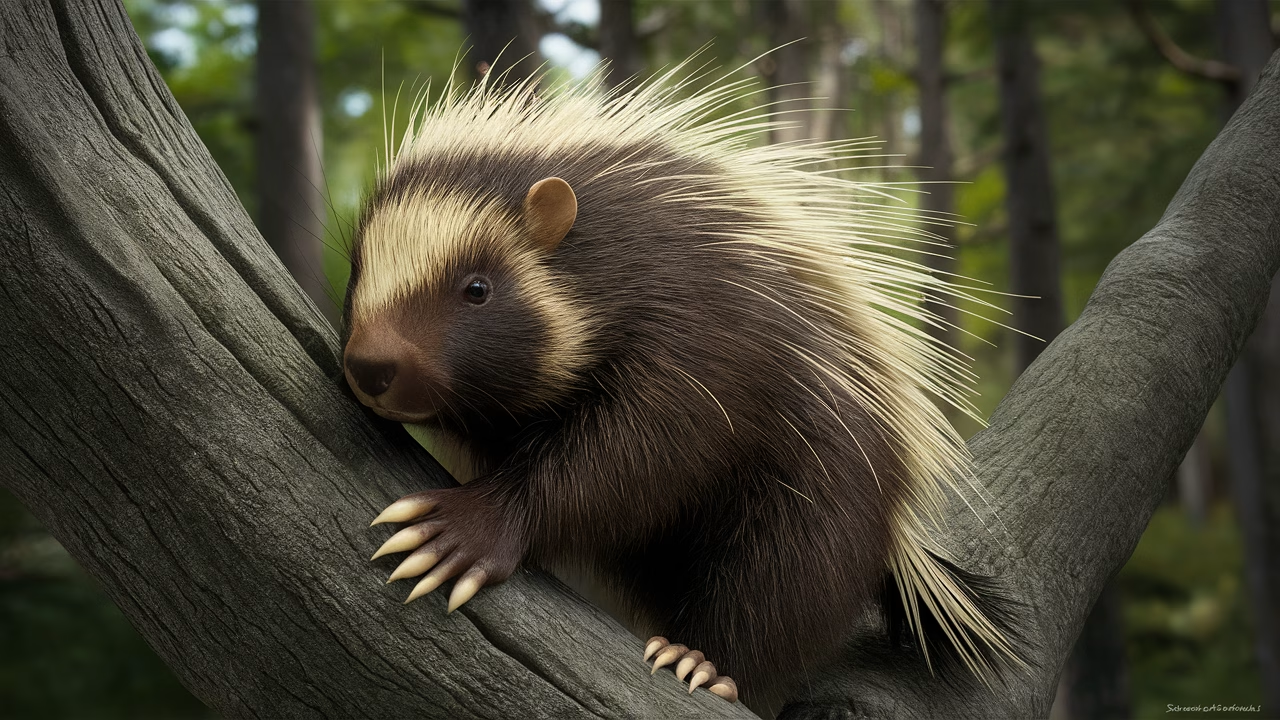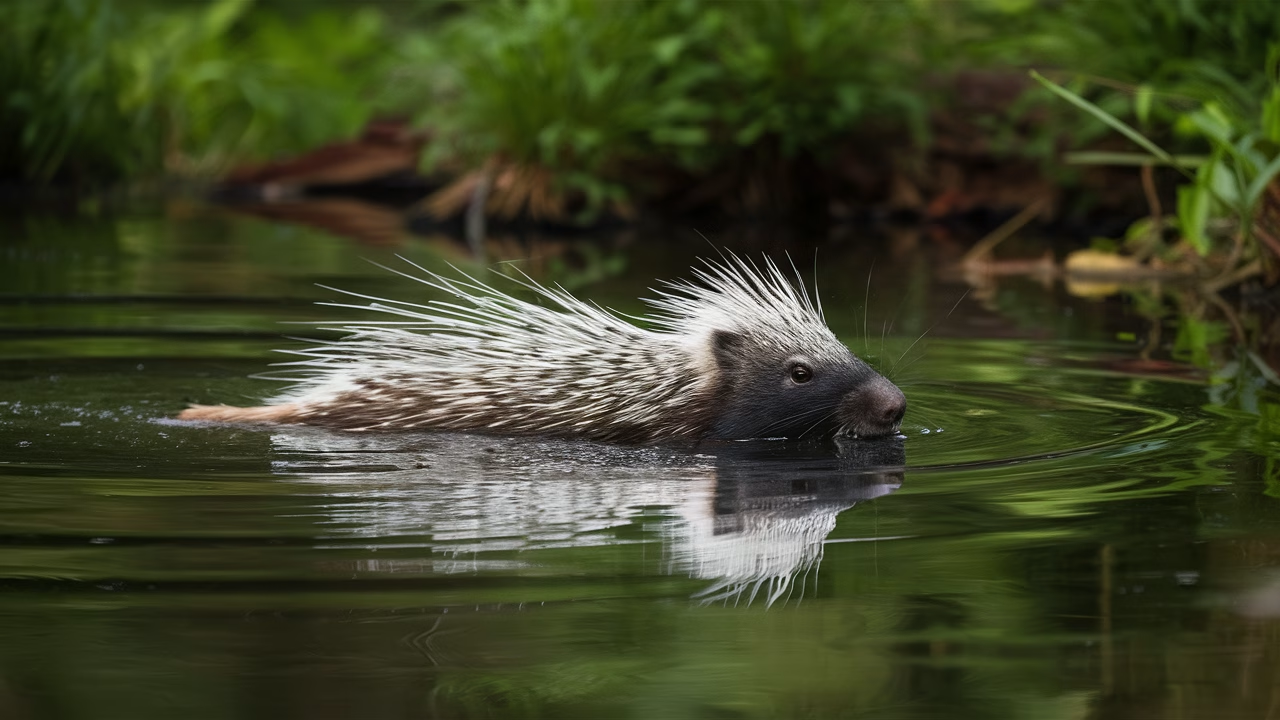Do Porcupines Float in Water? Here’s the Surprising Answer
Yes, porcupines float in water—and not only that, they are actually quite capable swimmers. It’s all thanks to the surprising anatomy of their quills, which are hollow and packed with air pockets. This buoyant structure, combined with their naturally low body density, gives porcupines a unique edge when they find themselves near rivers, ponds, or marshlands. But there’s more to their swimming than just floating—North American porcupines use a blend of their tails and all four limbs to paddle, making their aquatic movement appear almost graceful in the wild.
TL;DR: Do Porcupines Really Swim?
- Yes, porcupines do swim and float with ease due to their hollow quills containing air pockets.
- They can paddle using all four limbs, with the tail helping as a rudder for direction.
- Swimming is not just accidental; porcupines use it as a behavioral strategy to cross rivers or access food sources.
- The North American porcupine, in particular, has been observed swimming in varied wild habitats, especially forested wetlands.
- This adaptation also plays a survival role, letting porcupines escape predators across water obstacles.
The Unique Adaptations of Porcupines
Quills with Air Pockets: Nature’s Ingenious Design
At first glance, porcupine quills might seem like nature’s answer to self-defense—and they certainly are. But did you know that these specialized quills are also one of the primary reasons porcupines float? Each quill is a modified hair, coated in keratin and filled with a spongy interior rich in air pockets. Think of them as ultra-lightweight, hollow straws designed for more than defense; they form an in-built lifejacket that keeps North American porcupines buoyant in water.
This adaptation is functional across multiple fronts. First, it helps the porcupine remain afloat. Second, it contributes to insulation, especially in colder habitats where water temperature becomes a survival factor. And third, these air-filled quills actually make up a significant portion of the animal’s surface area, further increasing buoyancy for swimming porcupines.
Other Floating Factors: Body Composition and Fat Ratios
Porcupines have a relatively low muscle density and higher fat content than many land mammals, which enhances their natural buoyancy. When you combine this anatomical setup with their air pocket-filled quills and compact frame, it’s no surprise they don’t sink like stones when they encounter water.
Porcupines’ Swimming Abilities Explained
How Do Porcupines Swim in Water?
If you’ve ever spotted a North American porcupine gliding across a still pond, you’re witnessing one of nature’s more surprising swimmers. These creatures navigate water with remarkable grace despite their spiky appearance. Their preferred swimming method is the dog-paddle, using all four limbs in a gentle, cycling motion while their quills provide natural flotation.
But the real secret weapon? Their muscular tails. A porcupine’s tail is thick and semi-flattened, acting much like a rudder in water. It helps steer and maintain direction, allowing the animal to adjust its heading with minor tail flicks while swimming between feeding areas or escaping predators.
Why Would a Porcupine Need to Swim?
North American porcupines aren’t simply swimming for sport. In the wild, water becomes a regular part of their woodland and riparian habitat. To forage for aquatic plants, escape predators, or move between feeding zones, they often find themselves needing to cross creeks or marshy flats. And when they do, their buoyant bodies powered by air pockets in their quills and steering tails come in handy for survival.
Climbing Strategies of Porcupines
Climbing Spikes: More Than Just a Clever Name
Despite their tank-like appearance, porcupines are also exceptional climbers by nature. Thanks to their climbing spikes—stout, curved claws that function almost like miniature crampons—they are remarkably proficient in trees. These specialized adaptations let them dig into bark and branches with precision, making them as comfortable in treetops as they are floating in water.
North American porcupines will regularly forage in tree canopies, where they feed on leaves, bark, fruit, and even small twigs. Their low metabolic rate means they don’t need frequent meals, but when they do forage, they often climb high and stay there for hours, relying on their climbing spikes and balancing tail to move safely among branches.
Habitat and Diet of North American Porcupines
Where They Live—and Why It Matters
North American porcupines are mainly found across forested regions from Alaska and Canada down into parts of the northeastern and western United States. They favor habitats with a mix of coniferous and deciduous trees but are also found near wetlands, alpine regions, and shrublands where their swimming abilities prove most useful.
Their territory selection isn’t random. Access to tree bark in winter, aquatic vegetation in the summer, and safe nesting dens like rocky outcrops or hollowed logs are key criteria. In regions with heavy snowfall, you’ll often find well-worn trails leading to popular feeding sites or dens where porcupines shelter between foraging trips.
What Do Porcupines Eat?
A common misconception is that porcupines are aggressive chewers of wood for no reason. The truth is they’re strict herbivores with specific dietary preferences, feeding primarily on:
- Tree bark (especially in winter)
- Shrubs, buds, and stems
- Fruits and berries (seasonal)
- Aquatic plants (especially in marshy habitats where their swimming skills help them access food)
One peculiar aspect of their diet is a craving for salt—North American porcupines have been known to chew on plywood or road tools where salt residues linger, using their climbing spikes to access elevated salt sources.
Reproduction and Life Cycle of Porcupines
How Do Porcupines Reproduce?
Breeding season for North American porcupines ranges from late summer to early fall. After a curious and often elaborate courtship dance—complete with vocalizations and gentle nuzzles—a pair forms a temporary bond. Mating itself is quite cautious, as you’d expect given the quilled exteriors and air pocket-filled defensive structures involved.
Gestation lasts about seven months, quite long for a rodent. But the result is worth it: a single baby known as a porcupette. At birth, a porcupette’s quills are soft and moist, hardening within hours—a brilliant safety mechanism for both mother and child. These young are surprisingly precocious, capable of climbing with their developing climbing spikes and even swimming within days thanks to their natural air pocket buoyancy.
Notable Life Cycle Facts
- Average lifespan: 5–7 years in the wild, longer in captivity
- Reach independence within two to three months
- Primarily nocturnal, but often seen in daylight during colder seasons hunting for food or swimming to new feeding areas
Final Thoughts: More Than Just a Ball of Quills
North American porcupines aren’t just curious woodland creatures coated in defense—they’re complex, adaptable, and surprisingly versatile swimmers. Their quills aren’t just for keeping predators at bay; they’re ingenious, multi-purpose survival tools packed with air pockets that keep them buoyant. Combined with their climbing spikes, muscular tails, specialized diet, and remarkable reproductive resilience, porcupines are proof that evolution favors the inventive. Next time you see one near water, remember—you might just witness one of nature’s most unexpected swimmers in action.
Frequently Asked Questions
- Can porcupines really swim?
- Yes, porcupines are natural swimmers thanks to their hollow quills filled with air that provide excellent buoyancy.
- Do all species of porcupines float?
- While most porcupines can float due to air-filled quills, aquatic ability varies by species and environment. The North American porcupine is among the best swimmers.
- What role do quills play besides defense?
- Aside from deterring predators, quills provide insulation and buoyancy, supporting porcupines in cold and aquatic habitats.
- Are porcupines dangerous to humans?
- Porcupines are shy and non-aggressive. Injuries only occur if the animal feels cornered or threatened and lashes out reflexively.
- How do young porcupines avoid getting hurt by their mother’s quills?
- Porcupettes are born with soft, flexible quills that harden after birth to prevent injury during delivery.
- Where do porcupines live?
- They mostly inhabit forests across North America, often near wetlands or wooded areas where food and shelter are abundant.





